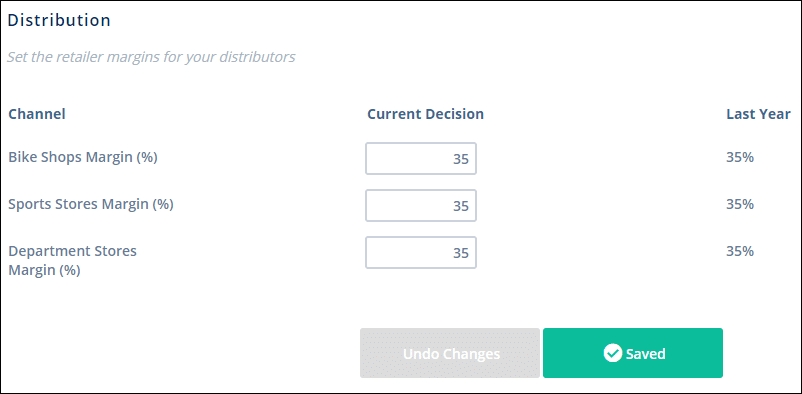Distribution decisions are available from Year 2 of the simulation:

The Distribution screen enables you to set a Retail Margin for each of the three distribution channels; Bike Shops, Sports Stores and Department Stores:

A retail margin is the percentage of a product’s retail price which is retained by the distributor for selling a product. Increasing your retail margins encourages distributors to sell your bikes but results in you earning less on each sale. Decreasing your retail margins increases your company’s profits, but too low and shops will stock your competitor’s bikes over yours.
Bikes Shops
The bike shop is a specialty store dedicated to bikes and bike-related products. Store assistants are trained bike specialists, able to tailor specific bikes to specific customers. Bike shops generally stock bikes in the mid to high price range (Road and Mountain). They generally require a higher retail margin.
Sports Stores
Sports stores stock a wide range of sporting equipment including bikes. The staff at these stores are not as knowledgeable on the complete bike range, but with their specialty in the outdoors, they are experts in Mountain Bikes.
Department Stores
Department stores (chain retailers) stock a wide range of all products. Their staff do not know much about bikes or the bicycle industry, but they have the largest customer base. They typically stock low to mid-priced bikes, sell in high quantities and generally require less retail margin.
Customer’s Shopping Preferences
The table below shows the proportion of customers who purchase through each distribution channel:

Distribution Performance
Your company’s distribution performance is tracked through a Distribution rating (0-100) and features on the Market Summary report.
